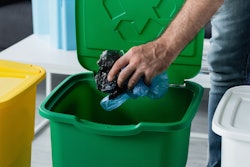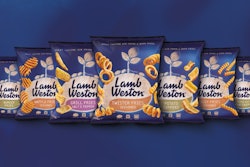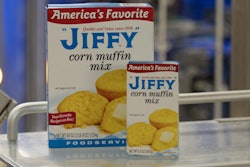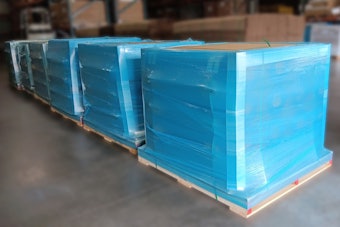
California’s extended producer responsibility (EPR) law for packaging might be forcing a consequential overhaul of the U.S. recycling system.
Known formally as SB 54, the law requires that by 2032 all packaging sold in the state be recyclable or compostable and that 65% of all packaging materials be recycled. Producers (brand owners and CPGs) will bear the cost and responsibility for meeting those targets. Materials that fail to meet performance thresholds may eventually face restrictions or penalties under CalRecycle rulemaking.
For brands and CPGs who package products in flexibles, the potential of losing footing in the California market seems existential. Films and pouches have long been prized for efficiency and source reduction, but lag in ease of recyclability. The structures are lightweight, often multilayered, and are hard to capture in municipal collection systems or material recovery facilities (MRFs). Flexible films can wrap around rotating screens, augers, and shafts in MRFs, gumming up the works. Or worse, they're prone to contaminate paper streams at MRFs that don't employ a burdensome secondary sortation (most currently don't), since flexibles often present as flat and two-dimensional, like paper rather than three-dimensional containers. California’s deadlines have put film recycling front and center, turning what was once a technical challenge (and in the case of multi-material substrates, a reprocessing impracticality), into an economic and regulatory necessity.
At today's FPA Flex Forward 2025 panel discussion on the future of flexible packaging recycling in California, leaders from across the value chain agreed that the industry’s response will depend on a systemic overhaul. The conversation, moderated by Kyla Fisher of the Flexible Packaging Association (FPA), included voices from producer responsibility, system design, and recycling operations perspectives: Neil Menezes of the Circular Action Alliance (CAA), Danielle Easdale of The Recycling Partnership (TRP), Anne Johnson of the newly introduced U.S. Flexible Film Initiative (USFFI-- and also Resource Recycling Systems, or RRS as her "day job"), and Susan Robinson, formerly of WM, now consulting. Their collective message is that flexible packaging recycling will rise or fall on end-market demand, design of both systems and packages, and collaboration through the circular value chain. (from left) Kyla Fisher of the Flexible Packaging Association (FPA), Neil Menezes of the Circular Action Alliance (CAA), Danielle Easdale of The Recycling Partnership (TRP), Anne Johnson of the newly introduced U.S. Flexible Film Initiative (USFFI-- and also Resource Recycling Systems, or RRS as her "day job"), and Susan Robinson, formerly of WM, now consulting.FPA
(from left) Kyla Fisher of the Flexible Packaging Association (FPA), Neil Menezes of the Circular Action Alliance (CAA), Danielle Easdale of The Recycling Partnership (TRP), Anne Johnson of the newly introduced U.S. Flexible Film Initiative (USFFI-- and also Resource Recycling Systems, or RRS as her "day job"), and Susan Robinson, formerly of WM, now consulting.FPA
Circularity and the role of 'downcycling'
Everyone agrees that the ultimate goal is circularity, or turning film back into film, bottles back into bottles, etc. But panelists emphasized that durable applications will be critical interim markets.
Products without the need for food-grade purity or appealing transparency, like decking, roofing membranes, and railroad ties, can absorb mixed or contaminated film that mechanical recycling cannot yet handle. These applications, while sometimes dismissed as “downcycling,” are building the bridge to circular systems.
“The highest and best use should always be the goal,” said Danielle Easdale of The Recycling Partnership. “But there’s a place for these durables too—products that can take material that either has higher contamination or mixed structures.”
The only problem is that durable markets aren’t limitless. Plastic's own longevity, usually a perk, is its enemy in this case.
“There are only so many benches and decks you can make,” said Menezes “At some point you saturate the market, and you have to look to the next demand to keep that cycle going.”
But PET bottles were recycled into textiles for decades before bottle-to-bottle systems matured, Robinson said.
“And if we hadn’t had those lower-cost markets, we might not be recycling some of the plastics we are today,” she said. So durable outlets create the early demand signals that allow higher-value systems to develop, she argued.
Anne Johnson of RRS pointed to roofing membranes as an example of a large, consistent, and under-appreciated opportunity. These construction products, she said, “can pull material through the system continuously,” providing long-term, high-volume demand. Large commercial markets such as roofing, decking, and asphalt modification also help build the processing capacity that packaging-to-packaging recycling will need later.
Advanced recycling is a promising but still controversial technology that has a ways to go, both in infrastructure and in standing. The 25 states that deem it a manufacturing process will be fine using it in a waiting food-contact packaging market. But some states consider it a waste management process, and material classified as waste is conceptually ill-suited for food-contact packaging. Johnson noted that non-mechanical/chemical recycling will likely play a role as EPR ramps up. It can handle complex, multilayered films that mechanical recyclers cannot, though the economics and environmental accounting remain under debate. “We’ll need all of it,” she said, “because the system isn’t monolithic, and neither are the materials.” Most flexible film never makes it to recycling. As Kyla Fisher noted in opening the discussion, curbside programs collect only a fraction of film packaging compared to store take-back and commercial recovery. The chart shows that 11 times more film is recycled via retail drop-off than curbside, and over three-and-a-half times more commercial film is recovered than post-consumer film. Fisher used this data to underscore the system’s starting point: film collection remains largely outside municipal infrastructure.FPA
Most flexible film never makes it to recycling. As Kyla Fisher noted in opening the discussion, curbside programs collect only a fraction of film packaging compared to store take-back and commercial recovery. The chart shows that 11 times more film is recycled via retail drop-off than curbside, and over three-and-a-half times more commercial film is recovered than post-consumer film. Fisher used this data to underscore the system’s starting point: film collection remains largely outside municipal infrastructure.FPA
Many flexibles, not one flexible
Few materials present as much diversity, or as much confusion, as flexible films. They were designed that way; multilayer or multi-material substrates are often honed into a tight spec for a specific packaging application. Polyethylene, polypropylene, PET laminations, metallized structures, and barrier-coated films each behave differently at end of life on their own. Complicating that, they are often co-extruded or laminated together with other materials like aluminum, EVOH, or tie layers, plus inks and adhesives. That diversity complicates everything from consumer labeling to EPR fee structures.
“There’s this balance we need to provide,” Menezes said. “Producers understand the differences between PE, PP, and PET laminations. Consumers and legislators don’t. To them, it’s just plastic.”
He argued for dual communication tracks: one technical, for producers designing packaging; and one simplified, for consumers and policymakers making decisions about what’s “recyclable.”
Meanwhile, recyclers, reprocessors, and end markets face a quality challenge.






















